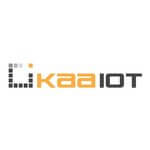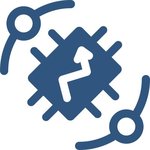What Is IoT Device Management Software?
IoT Device Management Software is a comprehensive solution for managing and monitoring the many interconnected devices that comprise the Internet of Things (IoT) ecosystem. With the increasing proliferation of IoT devices in numerous industries, it has become critical for enterprises to have a reliable platform for properly managing these devices.
At its core, IoT Device Management Software functions as a centralized control system that enables enterprises to remotely access and operate their IoT devices. Users may monitor their devices' performance, health, and activity, as well as push updates, modify settings, and troubleshoot issues remotely. One of the most important functions of IoT Device Management Software is device provisioning, which allows users to simply add new devices to their network and assign them to different groups or categories.
This simplifies the onboarding process and guarantees that all devices are securely linked and set up. Another important part of IoT Device Management Software is firmware and software updates. As technology advances, devices must be updated on a regular basis to guarantee they remain secure and work optimally. This program allows businesses to save time and effort by efficiently and seamlessly updating all linked devices.
Furthermore, IoT Device Management Software delivers real-time data and analytics on device performance, usage trends, and other key variables. This information can be utilized to optimize device utilization, identify potential problems, and make data-driven decisions that improve overall operations. IoT Device Management Software has security capabilities that protect devices and data from potential cyber threats.
This includes secure authentication, data encryption, and remote lock and wipe features in case a device is misplaced or stolen. Overall, investing in IoT Device Management Software can help enterprises by providing a comprehensive solution for managing and monitoring their IoT devices. This software can help businesses optimize their IoT infrastructure and increase efficiency by easing device administration, maintaining security, and giving important data.
What Are The Recent Trends In IoT Device Management Software?
The Internet of Things (IoT) has transformed how people interact with technology and common objects. The fast expansion of linked devices has necessitated the development of an efficient and secure management system. Here is where IoT device management software comes in handy. Over time, the market for IoT device management software has grown significantly, with a shift toward more powerful and user-friendly solutions.
Let's look at some of the most current trends in this field that purchasers should keep in mind while selecting the best software for their needs.
1. Integration With Artificial Intelligence (AI) And Machine Learning (ML): One of the most recent trends in IoT device management software is the use of AI and ML technologies. These technologies allow software to evaluate data from connected devices and deliver useful insights for improving performance and efficiency. This can help organizations make smarter decisions and spot possible problems before they occur, saving time and money.
2. Cloud-Based Solutions: As cloud-based services become more popular, it is unsurprising that IoT device management software is following suit. Cloud-based solutions provide scalability, flexibility, and remote access, allowing organizations to control their connected devices from anywhere in the globe. This also eliminates the requirement for on-premises infrastructure, lowering maintenance expenses.
3. Improved Security Features: Security is a significant priority for businesses when it comes to managing connected devices. As a result, IoT device management software now includes advanced security capabilities including device authentication, data encryption, and access control. These features help to fight against cyber threats and ensure the security of all connected devices and data.
4. User-Friendly Interfaces: Previously, IoT device management software was known for its sophisticated and technical interfaces, which made it difficult for non-technical users to control their devices. However, current developments indicate a preference for more user-friendly and intuitive interfaces. This allows firms to enroll new users and manage their devices without requiring specialized training, resulting in increased productivity.
5. Interoperability: The capacity of linked devices to interact and collaborate effortlessly is critical for successful IoT management. As a result, the most recent trend in IoT device management software is interoperability, which enables devices from many manufacturers and platforms to collaborate. This simplifies the management process while also creating chances for innovation and new use cases.
Benefits Of Using IoT Device Management Software
The Internet of Things (IoT) has swiftly become a critical component in a variety of businesses, providing increased efficiency, cost-effectiveness, and convenience. However, administering a vast network of connected devices can be a difficult endeavor, necessitating significant resources and experience. This is where IoT device management software comes into play, offering a complete solution for monitoring, controlling, and maintaining IoT devices.
We'll look at the main advantages of utilizing IoT device management software to help you make an informed decision for your company.
1. Centralized Management: One of the most significant advantages of utilizing IoT device management software is centralized administration. This software allows you to effortlessly view and manage all of your connected devices from a single dashboard. This eliminates the need for manual device management, which saves time, effort, and resources.
2. Real-Time Monitoring And Control: IoT device management software allows for real-time monitoring and control of your connected devices. It gives rapid alerts and notifications in the event of an issue, allowing you to resolve it before it escalates. This provides peak performance and minimal downtime, improving the overall efficiency of your IoT network.
3. Device Security: As the number of connected devices increases, so does the likelihood of cyberattacks. IoT device management software provides comprehensive security capabilities to keep your network safe from any attackers. It contains features like data encryption, user authentication, and access control to ensure the security and integrity of your devices and information.
4. Over-The-Air Updates: IoT device management software allows your devices to get over-the-air (OTA) updates, removing the need for manual upgrades. This capability enables you to remotely upgrade the firmware, software, or configurations of your devices, saving time and resources. It also ensures that your devices are always up to date, with the latest security fixes and features.
5. Cost Savings: IoT device management software saves money by automating device administration and decreasing the need for manual work. It eliminates the need for expensive field visits, lowers downtime, and prevents device damage, resulting in more cost-effective operations.
Important Factors To Consider While Purchasing IoT Device Management Software?
When selecting IoT device management software, there are numerous key elements to consider to ensure that you are making the best decision for your individual requirements. As the Internet of Things (IoT) expands and becomes more widespread in numerous industries, the demand for dependable and effective device management solutions grows.
To assist you understand the myriad options on the market, here are some critical aspects to consider when selecting IoT device management software:
1. Scalability: Before deciding on device management software, you should examine the scalability of your organization and the future expansion of your IoT network. Can the software readily adapt to new devices? Can it support a huge number of devices while maintaining performance? It is critical to select a system that can scale with your business and meet your future requirements.
2. Device Compatibility: One of the most important considerations is if the software is compatible with the devices on your network. It should support a wide range of devices and operating systems to ensure seamless integration and management. If you have a specific device or operating system, make sure the program is compatible before purchasing.
3. Security: Because IoT devices are susceptible to cyber attacks, it is critical to select device management software that prioritizes security. Look for features such as device authentication, data encryption, and automatic security upgrades. Additionally, the software should be capable of remotely tracking, monitoring, and managing devices in order to detect and prevent security breaches.
4. Flexibility And Customization: Your company may have specific requirements and procedures, and the device management software you select should be able to adapt these. Look for a technology that allows you to create custom workflows, dashboards, and reports. This ensures that the software adjusts to your business needs, rather than the other way around.
5. User-Friendliness: The device management software should have an intuitive and simple interface that your team can comprehend and utilize. This will help to reduce the time and resources spent on training while increasing production. It should also include a centralized dashboard that provides a comprehensive overview of the IoT network, making device monitoring and management easy.
6. Support And Maintenance: Choose device management software that provides comprehensive support and maintenance services. This includes frequent upgrades, bug patches, and technical assistance to guarantee that the program functions properly and with little disruptions. It is also critical to review the vendor's service level agreements (SLAs) to determine their commitment to delivering prompt support and maintenance.
7. Cost: Finally, examine the cost of the device management software. While it may be tempting to choose a cheaper option, it is critical to consider the whole cost of ownership, which includes maintenance and support expenses. To guarantee that you get the most out of your money, choose a solution that strikes a balance between cost and features.
What Are The Key Features To Look For In IoT Device Management Software?
When contemplating investing in IoT Device Management Software, a few important characteristics should be at the top of your priority list.
These capabilities will not only ensure that your devices are managed efficiently and effectively, but will also create a consistent experience for you and your end users.
1. Remote Device Monitoring And Management: The ability to remotely monitor and manage your devices is an essential function. This enables real-time monitoring of device performance, as well as remote update and troubleshooting capabilities.
2. Device Security: With an increasing number of connected devices, security is a primary priority. To safeguard your devices from cyber-attacks, seek for software that includes solid security features such as authentication, authorization, and data encryption.
3. Scalability: As your company expands, your device network will most certainly expand as well. Choose highly scalable software that will allow you to add more devices without disrupting the system.
4. Centralized Dashboard: A centralized dashboard gives a unified interface for managing all of your devices, making it easy to evaluate device performance, spot faults, and deploy upgrades across your whole network.
5. Flexibility: Depending on the IoT device, different administration protocols may be required. Look for software that allows for protocol flexibility while also supporting the most used ones, such as MQTT and CoAP.
6. Data Analytics: IoT devices generate massive amounts of data, and being able to analyze this data can bring significant insights into your business. Look for software that includes data analytics capabilities, either built-in or by interface with other systems.
7. Over-The-Air Updates: The ability to remotely update device software and firmware is critical for effective management, particularly for devices placed in remote or difficult-to-access areas.
8. Customization And Automation: Select software that allows you to customize and automate operations like setting up alerts and developing rules for automatic device management based on certain conditions.
9. Integration Capabilities: Your IoT Device Management Software should be able to integrate with other systems and platforms, such as your current IoT platform or cloud services, to give a comprehensive solution for controlling your devices.
10. User-Friendly Interface: Last but not least, the program should have a simple interface that even non-technical users can browse and understand. This saves time and lowers the possibility of errors when managing your devices.
Why Do Businesses Need IoT Device Management Software?
In today's increasingly connected and digital world, organizations are using IoT (Internet of Things) technology to improve operational efficiency, lower costs, and improve customer experience. However, controlling a large number of IoT devices can be a difficult and scary undertaking. This is where IoT device management software comes in.
Here are a few reasons why businesses want IoT device management software.
1. Centralized Device Management: IoT device management software offers a centralized platform for monitoring, controlling, and managing all connected devices from one location. This removes the need for several instruments and manual operations, saving organizations valuable time and effort.
2. Real-Time Monitoring And Analytics: IoT device management software allows businesses to gain real-time insights and analytics into the operation and usage of their devices. This aids in the proactive identification and resolution of issues, minimizing downtime and increasing overall system efficiency.
3. Scalability And Flexibility: As businesses grow, the number of IoT devices rises. IoT device management software offers scalability and flexibility, allowing you to simply add and manage new devices without disturbing the existing infrastructure.
4. Security And Compliance: IoT devices are subject to cyberattacks, and a data breach can have serious ramifications for enterprises. To mitigate potential dangers, IoT device management software includes advanced security capabilities such as device authentication, data encryption, and compliance management.
5. Cost Savings: By automating device management operations and lowering downtime, enterprises can reduce operating expenditures. IoT device management software also allows for remote management, which reduces trip charges and increases overall cost savings.
How Much Time Is Required To Implement IoT Device Management Software?
The deployment time for IoT device management software varies depending on several aspects, including the size of the organization, the complexity of the network, and the specific demands of the business. However, completely implementing and integrating this software into your existing system can take anything from a few weeks and several months.
To begin, analyze your current network architecture and identify any potential difficulties or gaps that must be solved before installing IoT device management software. This process may take a few weeks, depending on the size and complexity of your network. The following step is to select an appropriate IoT device management software solution that matches your individual needs.
This can include researching and assessing several vendors, which can take several weeks to months. After selecting the program, the actual implementation process begins. This involves installing the required hardware and software, connecting and configuring devices, and ensuring smooth integration with your existing systems. This stage might take anything from a few weeks to a month, depending on the size and complexity of your network and devices. During the implementation process, you should also consider your team's training and onboarding.
Depending on the software's complexity and your team's capabilities, this could take anywhere from a few days to a few weeks. Finally, once the implementation is complete, a testing process is conducted to confirm that all devices and systems are operational and that any defects or issues have been handled. This stage may take a few weeks, depending on the size and scope of your network.
What Is The Level Of Customization Available In IoT Device Management Software?
IoT device management software is an effective solution for businesses to easily and securely manage their network of connected devices, including sensors, cameras, and smart appliances. One important element to consider when selecting IoT device management software is the level of flexibility available. This refers to the software's capacity to be customized to meet the individual goals and requirements of an organization, rather than providing a one-size-fits-all solution.
The level of flexibility possible in IoT device management software varies according on the provider's offers. Some software may have numerous adjustable choices, whilst others may have less. Buyers should thoroughly assess their needs and compare them to the software's customization options before making a purchase. One aspect of customisation to consider is the ability to remotely configure and monitor devices.
This enables businesses to remotely alter and monitor their connected devices, such as changing settings or obtaining real-time data, without physically accessing them. This not only saves time and resources, but also enables a faster response in the event of an incident. Another critical consideration is the capacity to integrate with existing systems and platforms.
This covers interaction with various IoT protocols, communication standards, APIs, and enterprise systems. This level of customization guarantees that the device management software integrates seamlessly with other corporate systems, delivering a more complete picture of operations. Some IoT device management software also supports customized notifications and alerts.
This enables firms to set up notifications for certain events or threshold levels, ensuring that urgent situations are identified and addressed as soon as possible. Customized alerts can be sent via email, SMS, or push notifications, allowing businesses to select their preferred way of communication. Additionally, certain software may provide unique reporting and analytics features.
This enables businesses to generate customized reports and dashboards for tracking and analyzing data from their connected devices. This data can help firms detect trends, patterns, and potential difficulties, providing vital insights for decision-making and operational optimization. Overall, the level of customisation possible in IoT device management software has a significant impact on its usefulness and efficiency for businesses. To choose the finest software solution for their firm, buyers should carefully assess their needs and prioritize the customization capabilities they desire.
Which Industries Can Benefit The Most From IoT Device Management Software?
IoT (Internet of Things) devices are quickly becoming commonplace in a variety of industries, providing businesses with useful data and insights. However, controlling and monitoring these devices may be a demanding endeavor, particularly as the number of devices grows. Here is when IoT Device Management Software comes in handy. This robust software allows enterprises to manage their IoT devices efficiently and effectively, resulting in smooth operations and peak performance. So, what industries will profit the most from this software? The answer is nearly any industry that uses IoT devices.
However, several industries stand out for the potential benefits of IoT Device Management Software.
1. Manufacturing: IoT devices are utilized to track and monitor equipment, production lines, and supply chain processes. IoT Device Management Software allows manufacturers to remotely access, monitor, and troubleshoot their devices in real time. This not only ensures the proper operation of machines but also reduces downtime, lowering production costs.
2. Healthcare: The healthcare business can also profit substantially from IoT Device Management Software. With the growing usage of IoT devices in medical equipment and patient monitoring systems, a dependable and secure administration platform is essential. This software enables healthcare personnel to remotely administer and monitor these devices, assuring accuracy and timeliness in maintenance.
3. Retail: IoT devices are transforming the way stores function, from inventory management to smart checkout systems. However, controlling and maintaining a large number of devices dispersed throughout multiple sites can be difficult. This is where IoT Device Management Software comes in, giving merchants a centralized platform to monitor and control their devices, resulting in increased productivity and better customer experiences.
4. Transportation And Logistics: IoT devices are utilized in the transportation and logistics industries to manage fleets, track assets, and optimize routes. Businesses can use IoT Device Management Software to remotely monitor their cars and assets, assuring timely maintenance and effective operations. This can lead to cost savings, increased safety, and greater customer satisfaction.
5. Energy And Utilities: The energy and utilities industries can also profit significantly from IoT Device Management Software. Companies can use this software to remotely monitor and manage their energy infrastructure, which includes smart meters and power grids. This can lead to increased energy efficiency, better maintenance, and lower costs.
Conclusion
After conducting significant study and analysis, it is clear that selecting the appropriate IoT device management software is critical to the success of any organization's IoT strategy. These software solutions provide numerous benefits, including streamlining processes and increasing efficiencies, as well as assuring security and scalability. When selecting an IoT device management software, it is critical to evaluate your organization's specific goals and expectations.
This covers the quantity and types of devices you intend to manage, your budget, and the technical skills of your team. It is also crucial to assess the software's features and capabilities, such as remote device monitoring and management, over-the-air (OTA) updates, and advanced analytics. These capabilities will significantly improve the effectiveness and efficiency of handling your IoT devices.
Furthermore, assess the vendor's reputation and track record in the sector. Look for software vendors who have a track record of delivering dependable and secure solutions, as well as outstanding customer service. Finally, take advantage of free trials or demos provided by software vendors. This allows you to evaluate the software's functionality, usability, and compatibility with your devices before making a final selection.
Investing in high-quality IoT device management software is a critical step toward maximizing the potential of your organization's IoT devices. company IoT strategy can be successful if you properly examine company needs, evaluate features and capabilities, and select a credible vendor. So, take your time, conduct research, and select the program that best corresponds with your aims and objectives. With the proper IoT device management software, you can streamline processes, increase efficiencies, and drive innovation and growth in your organization.






















